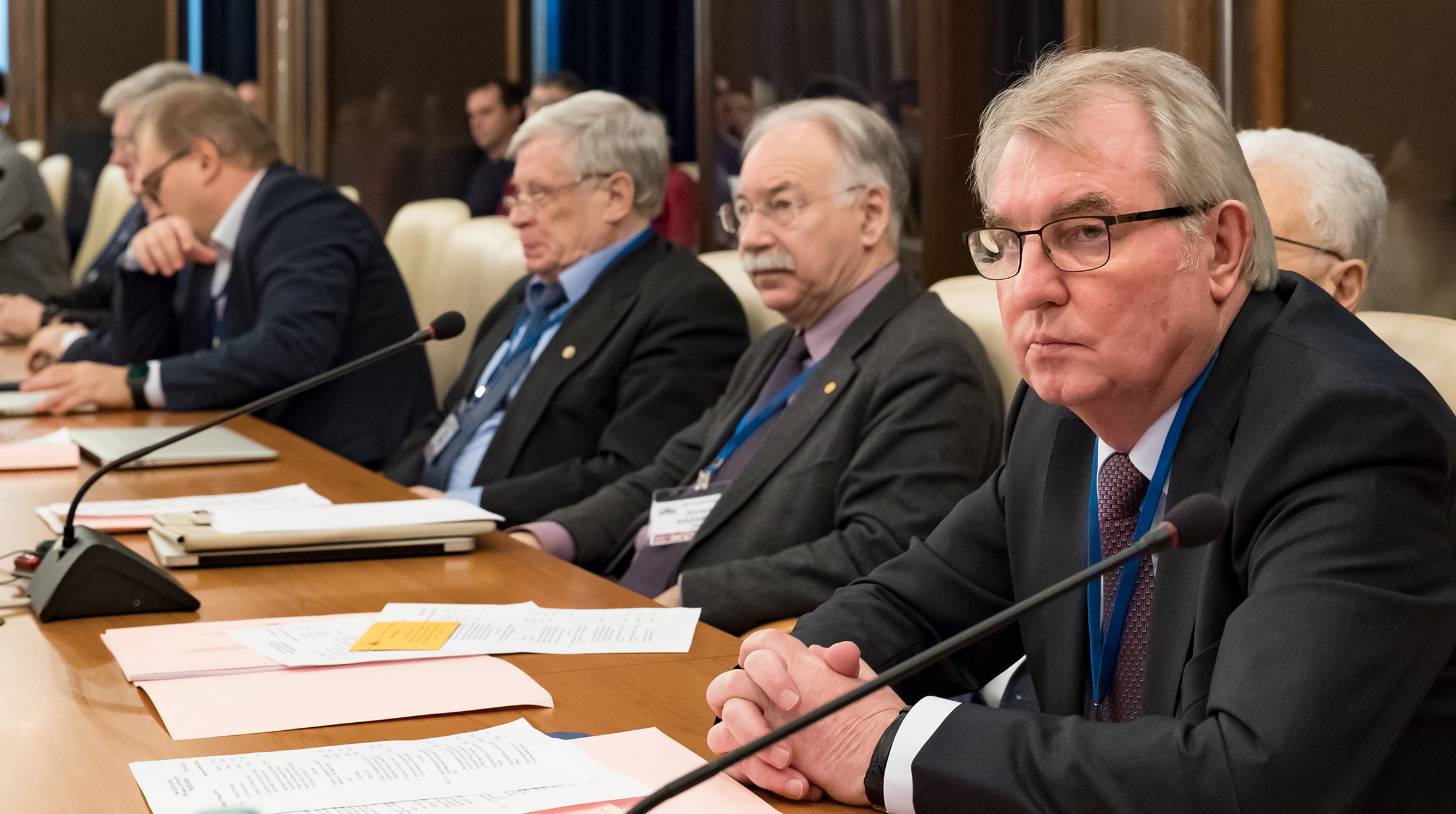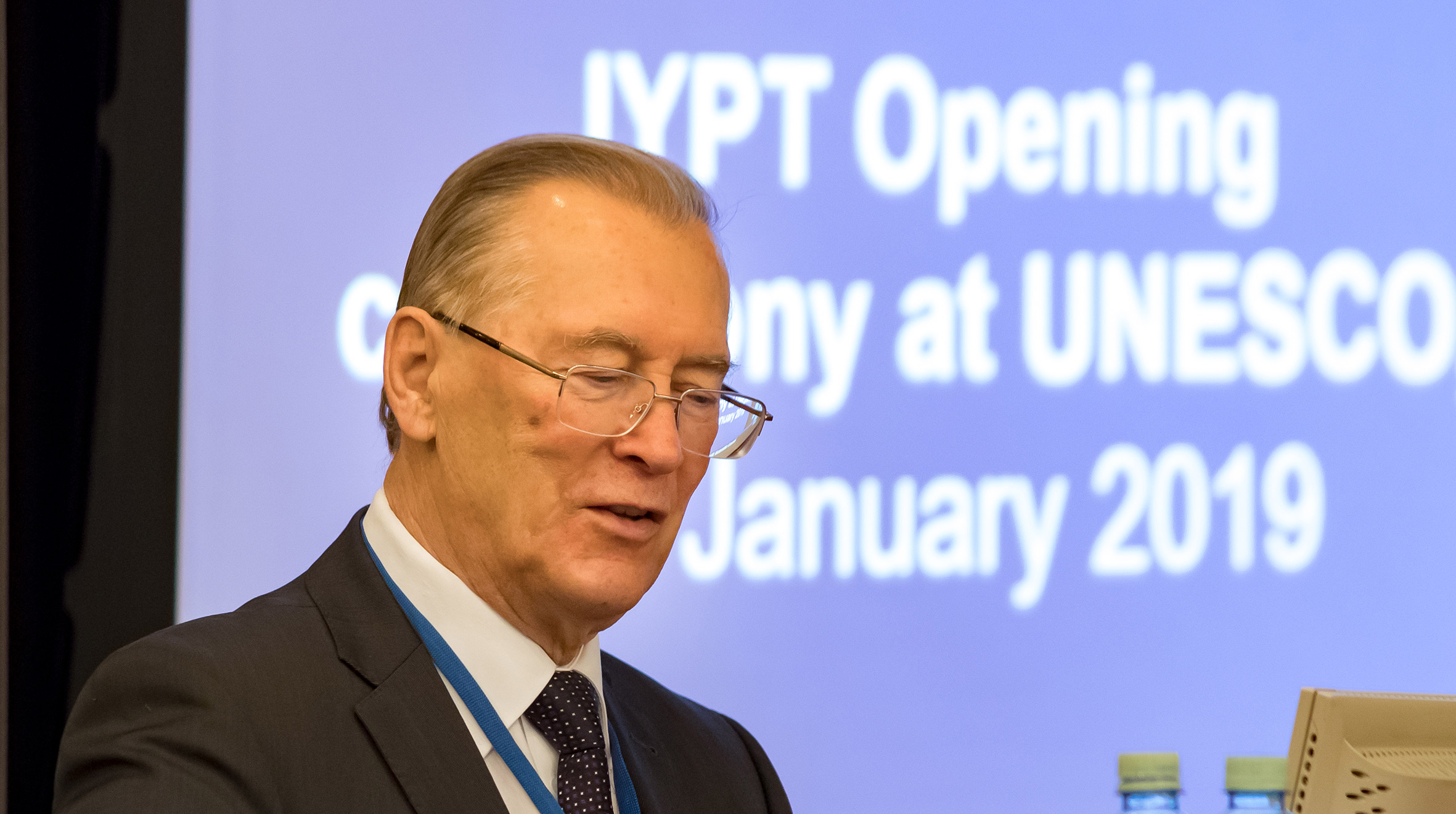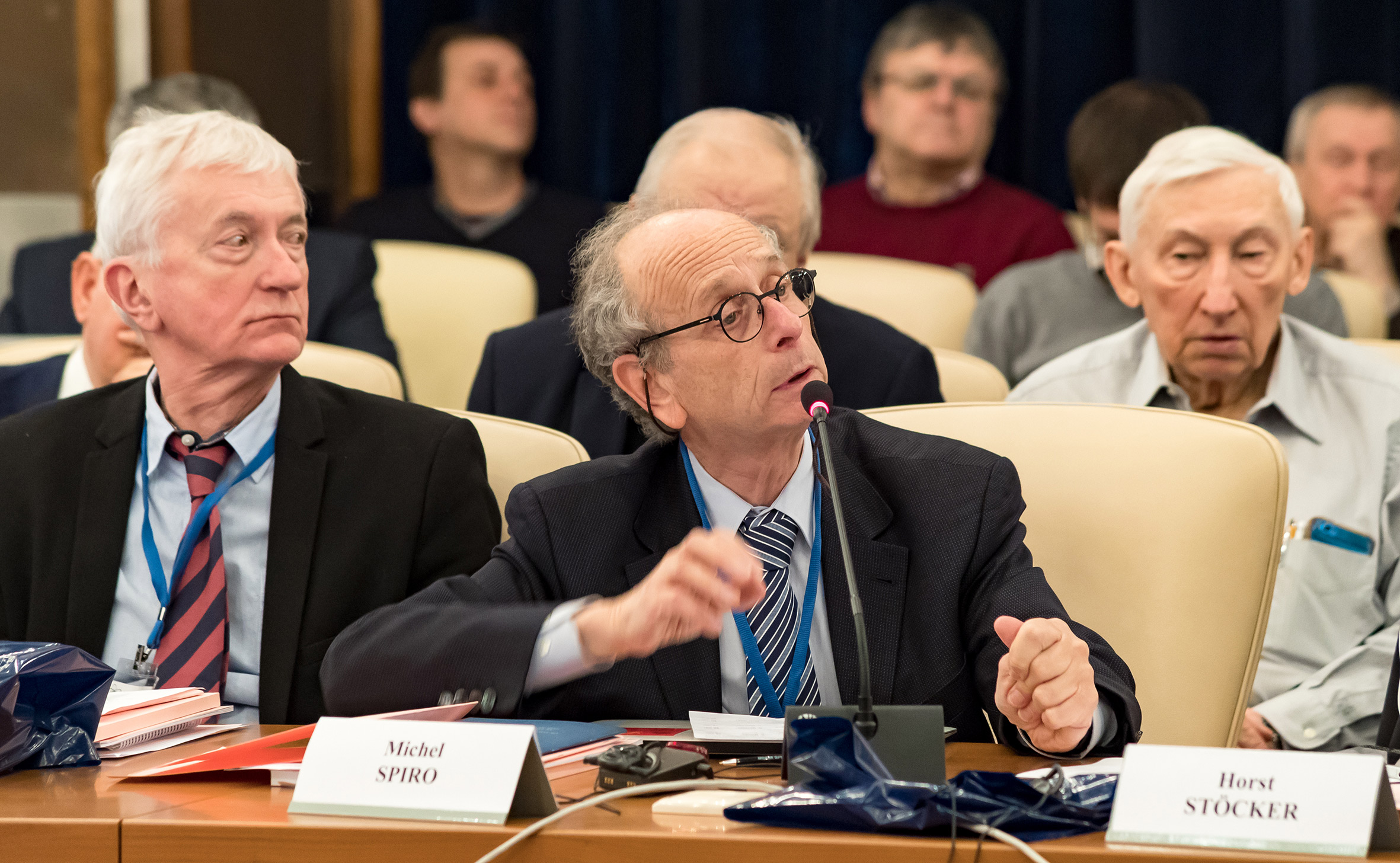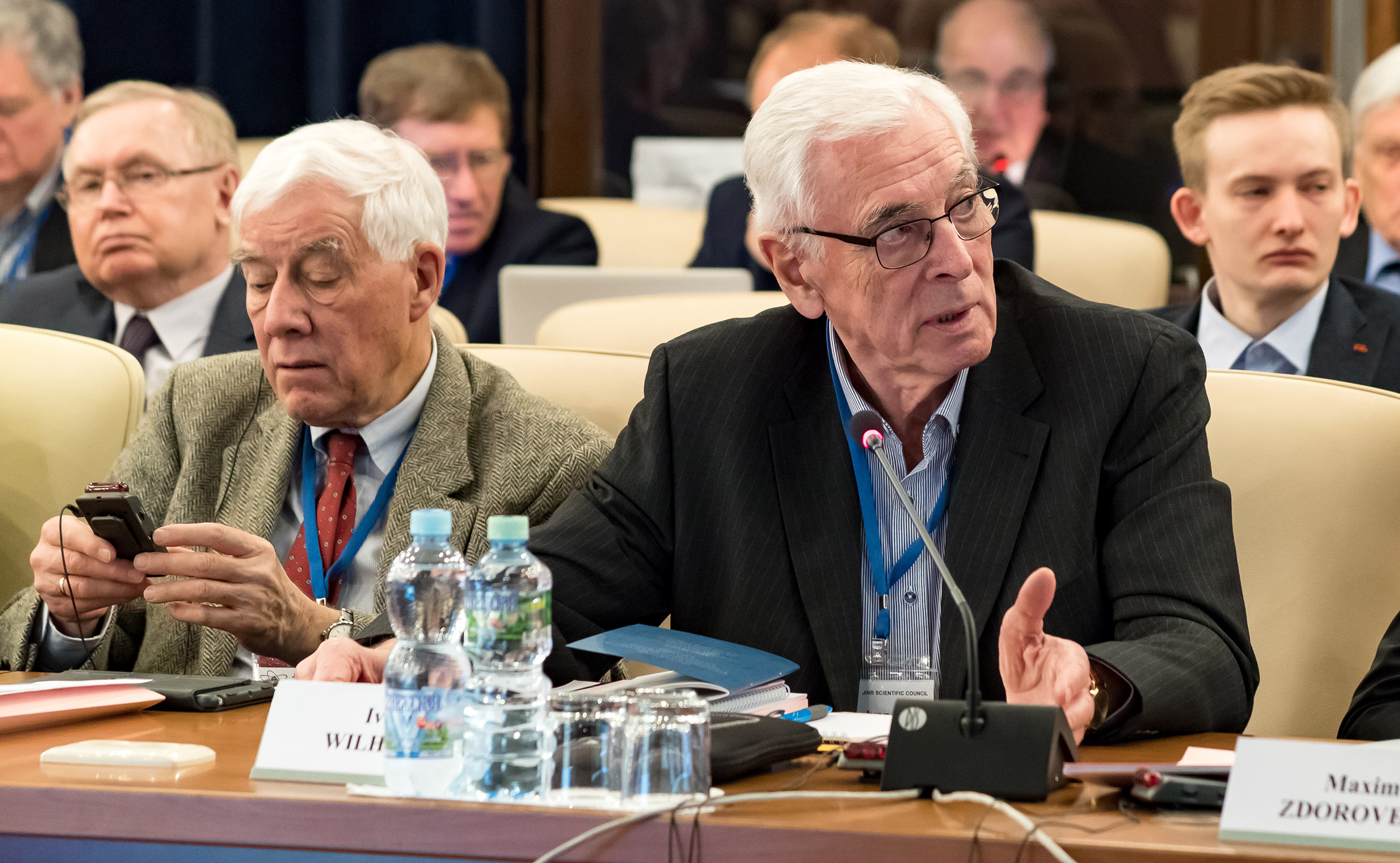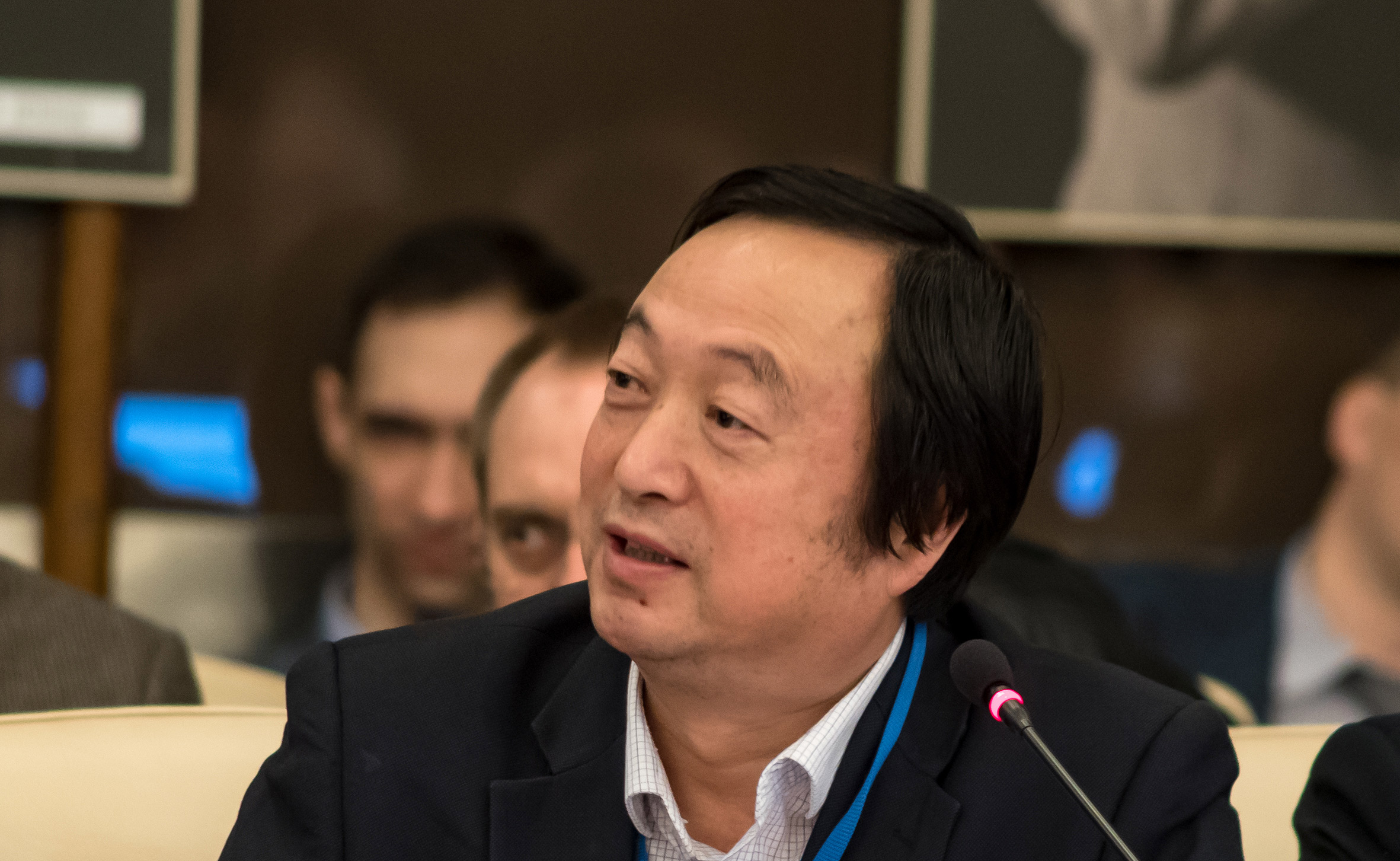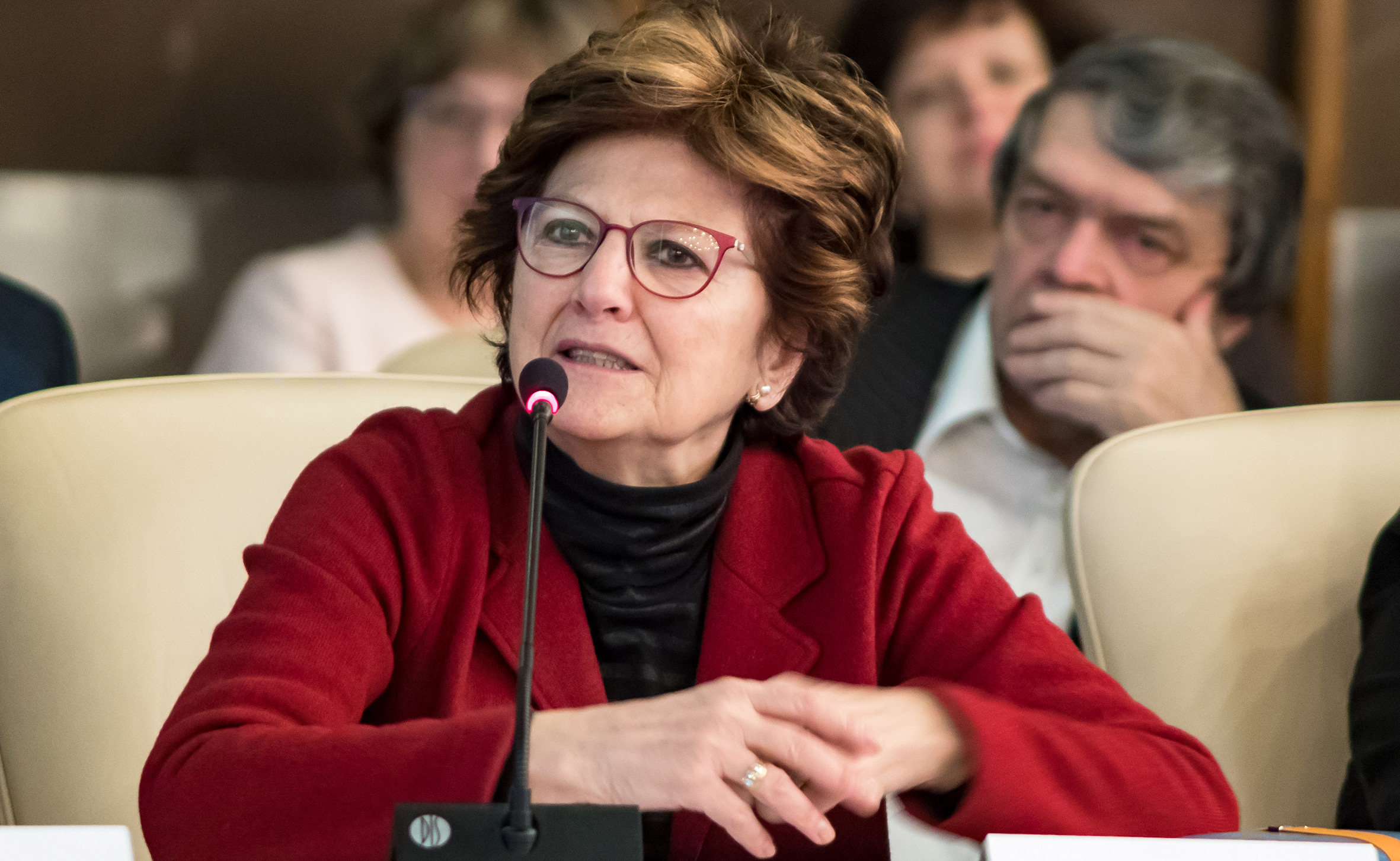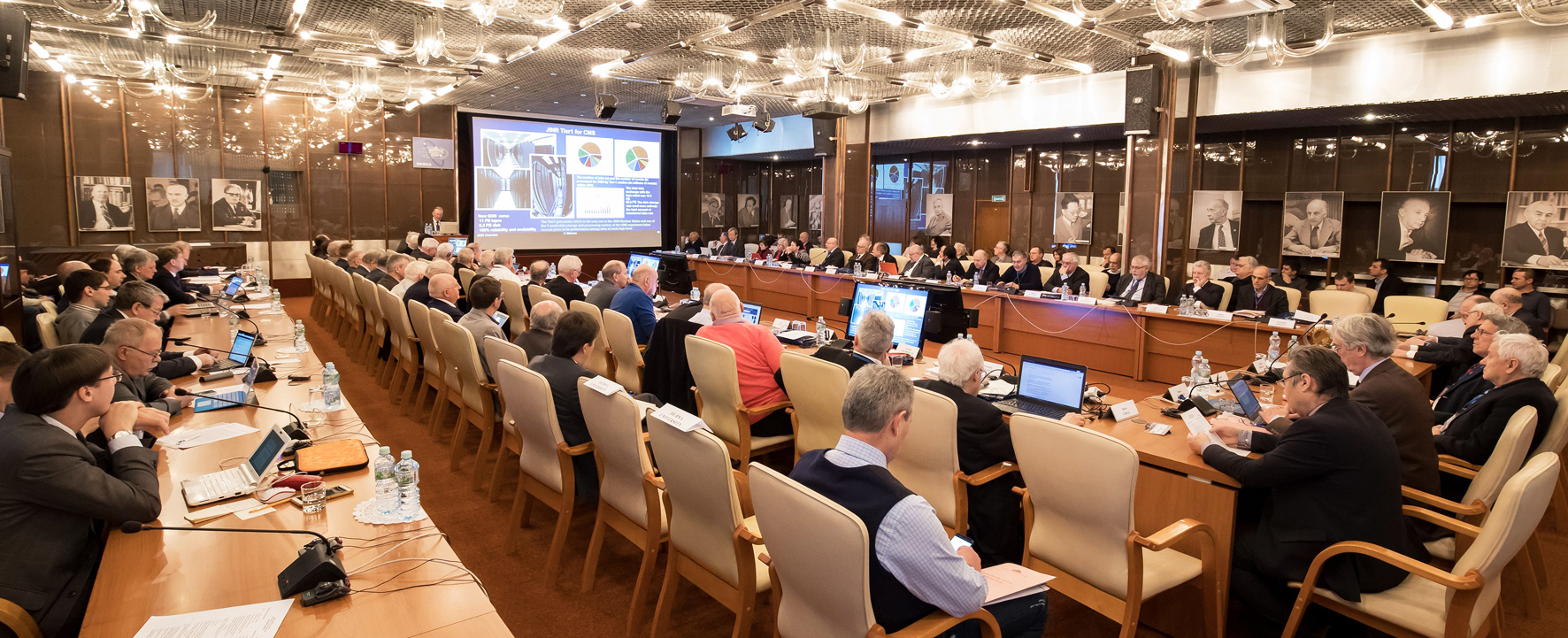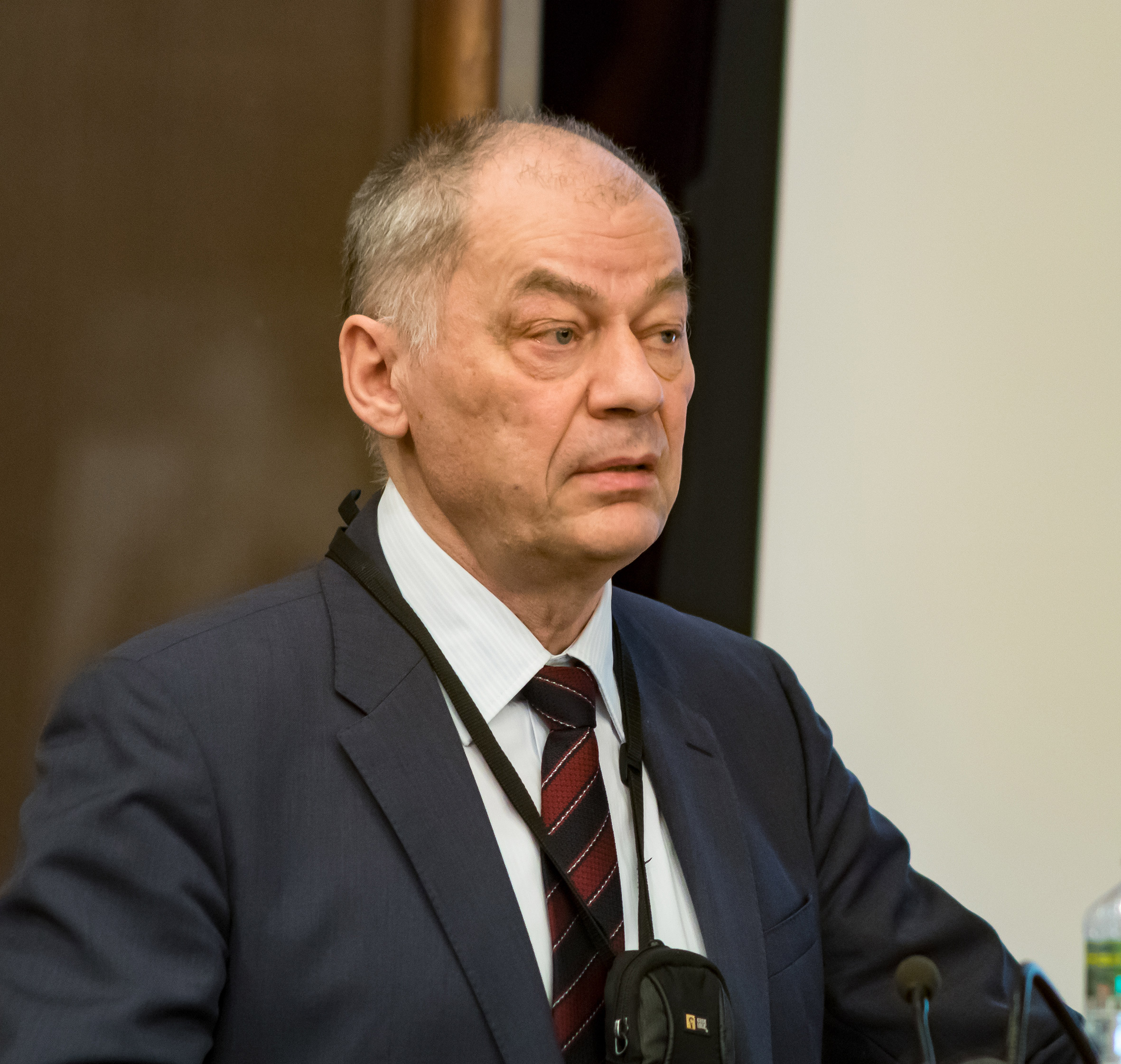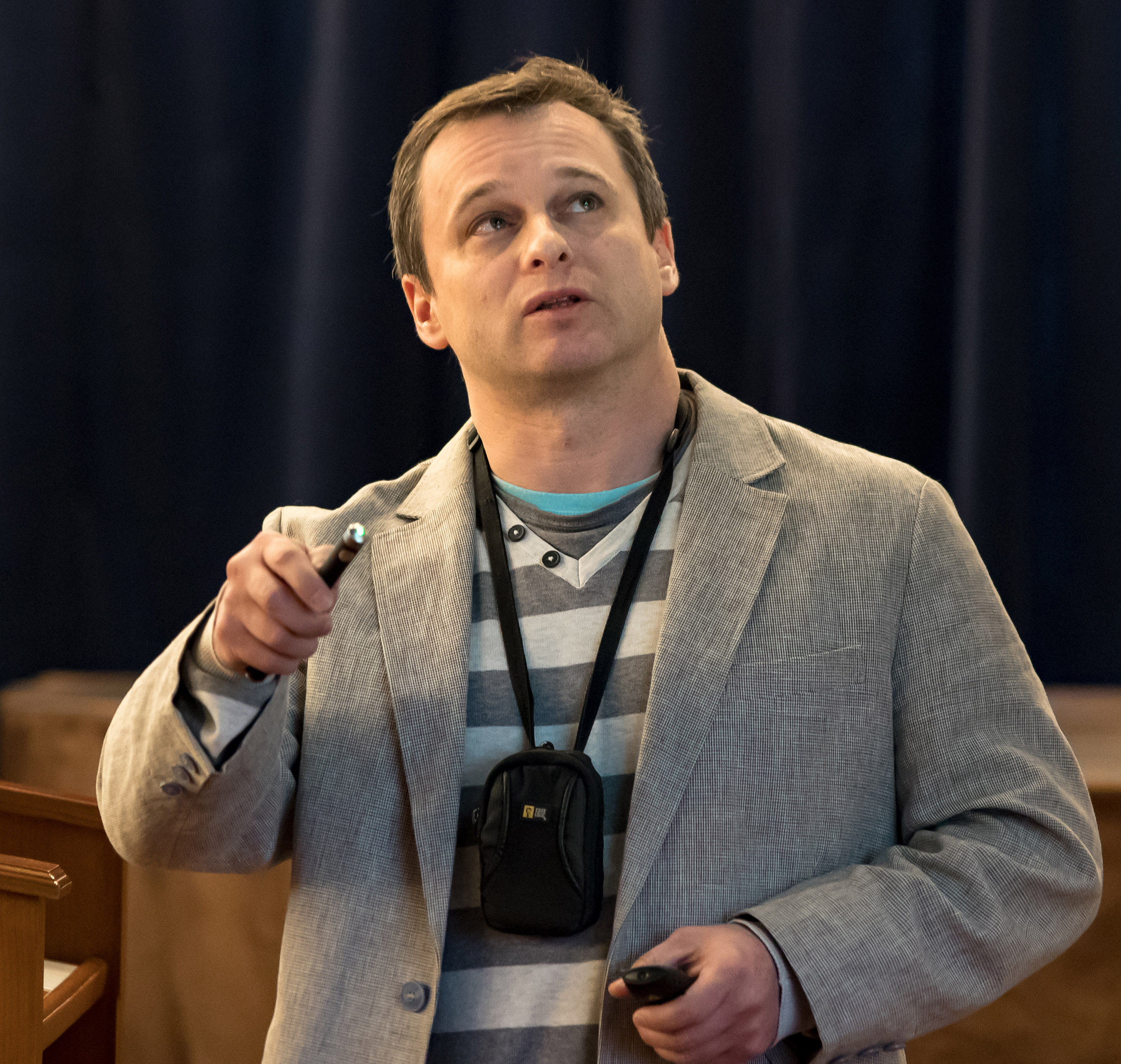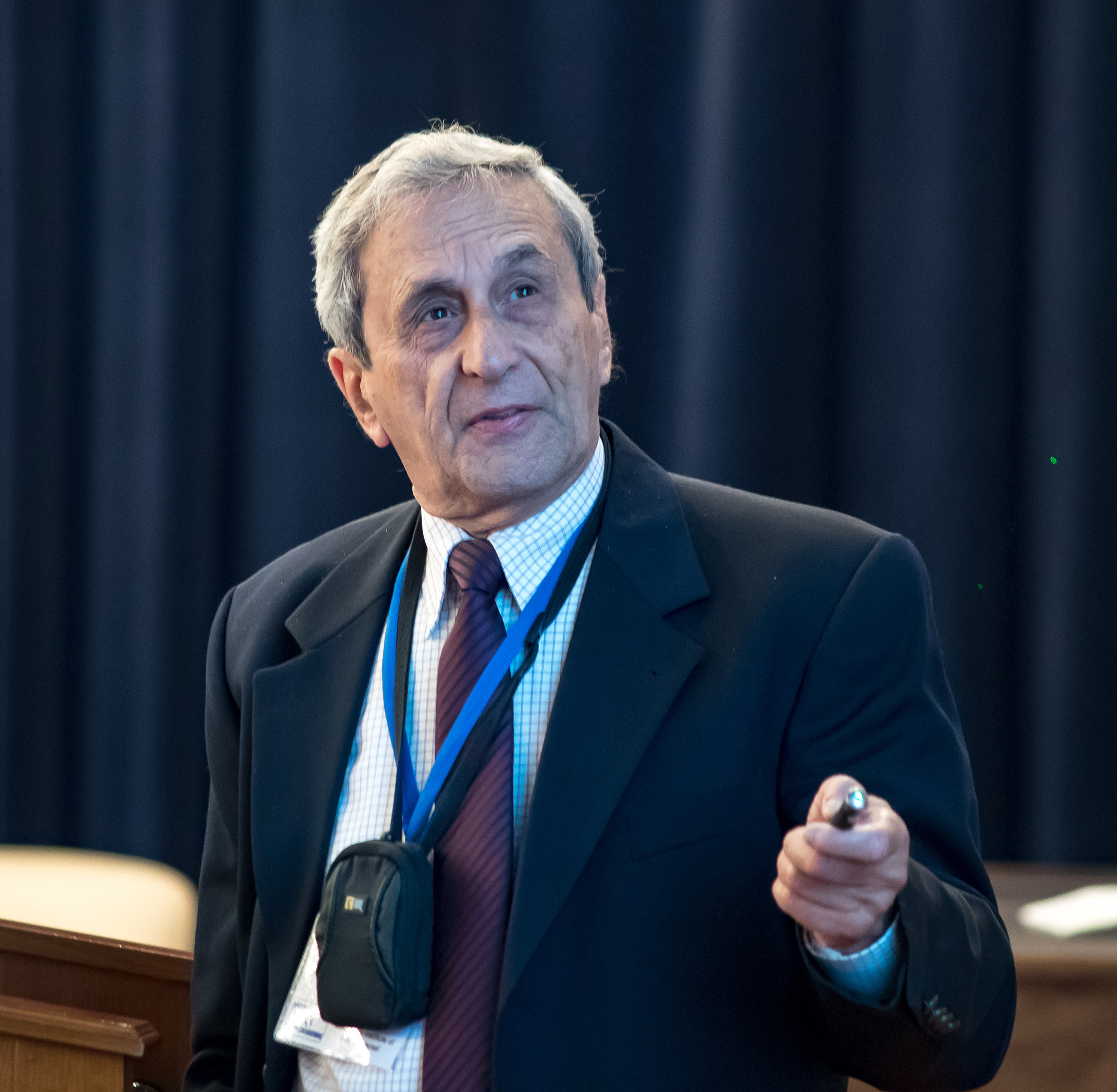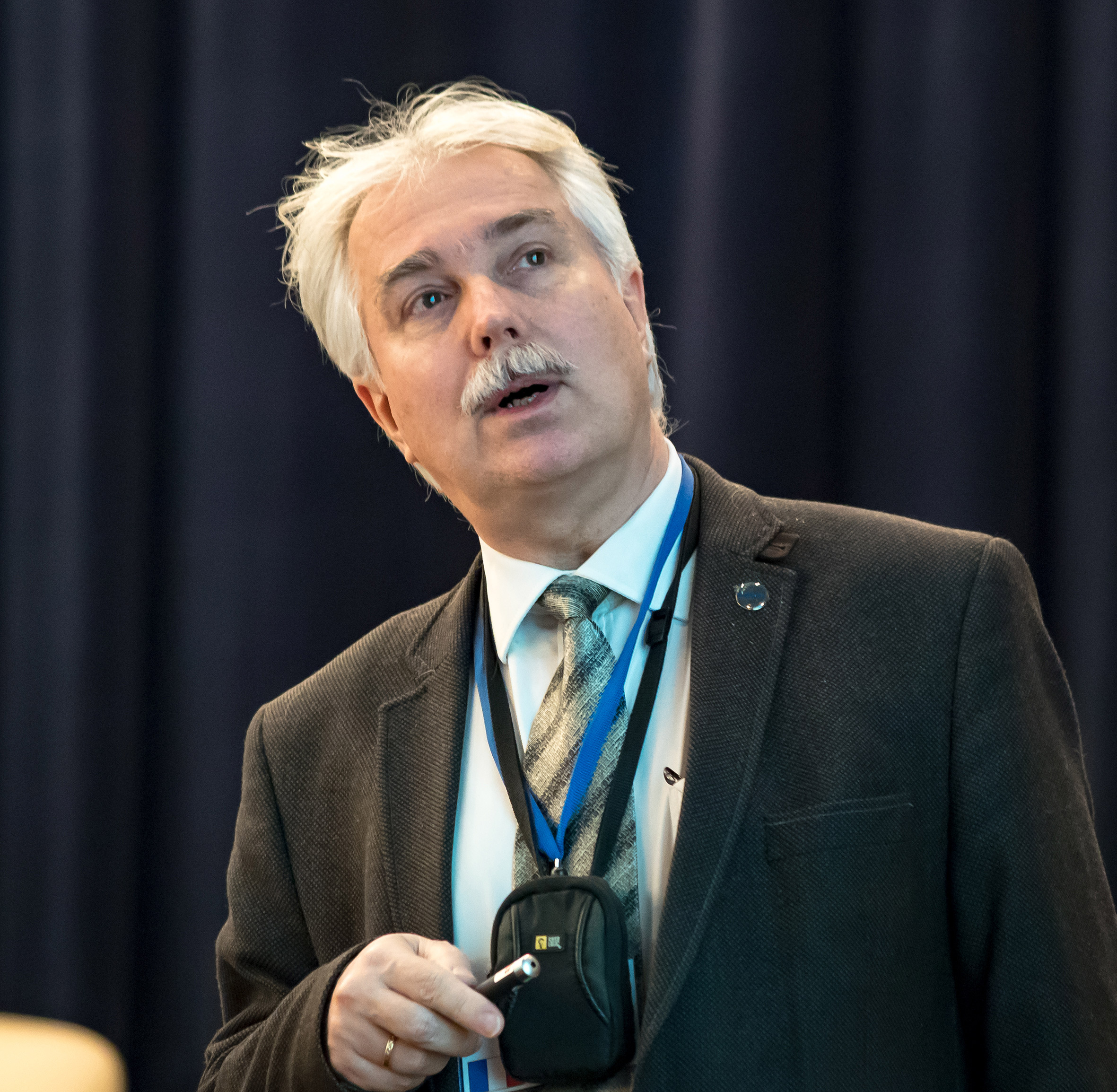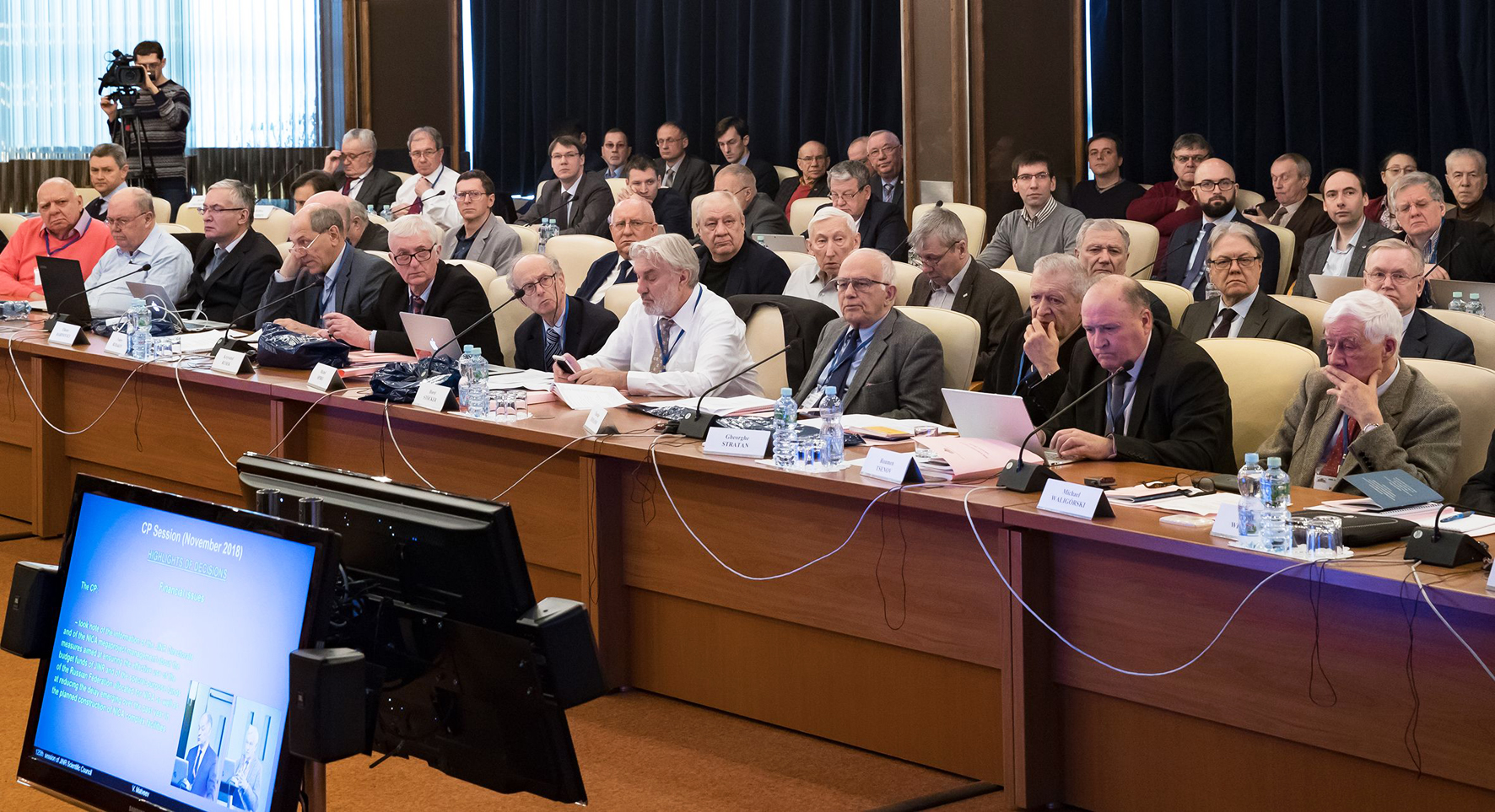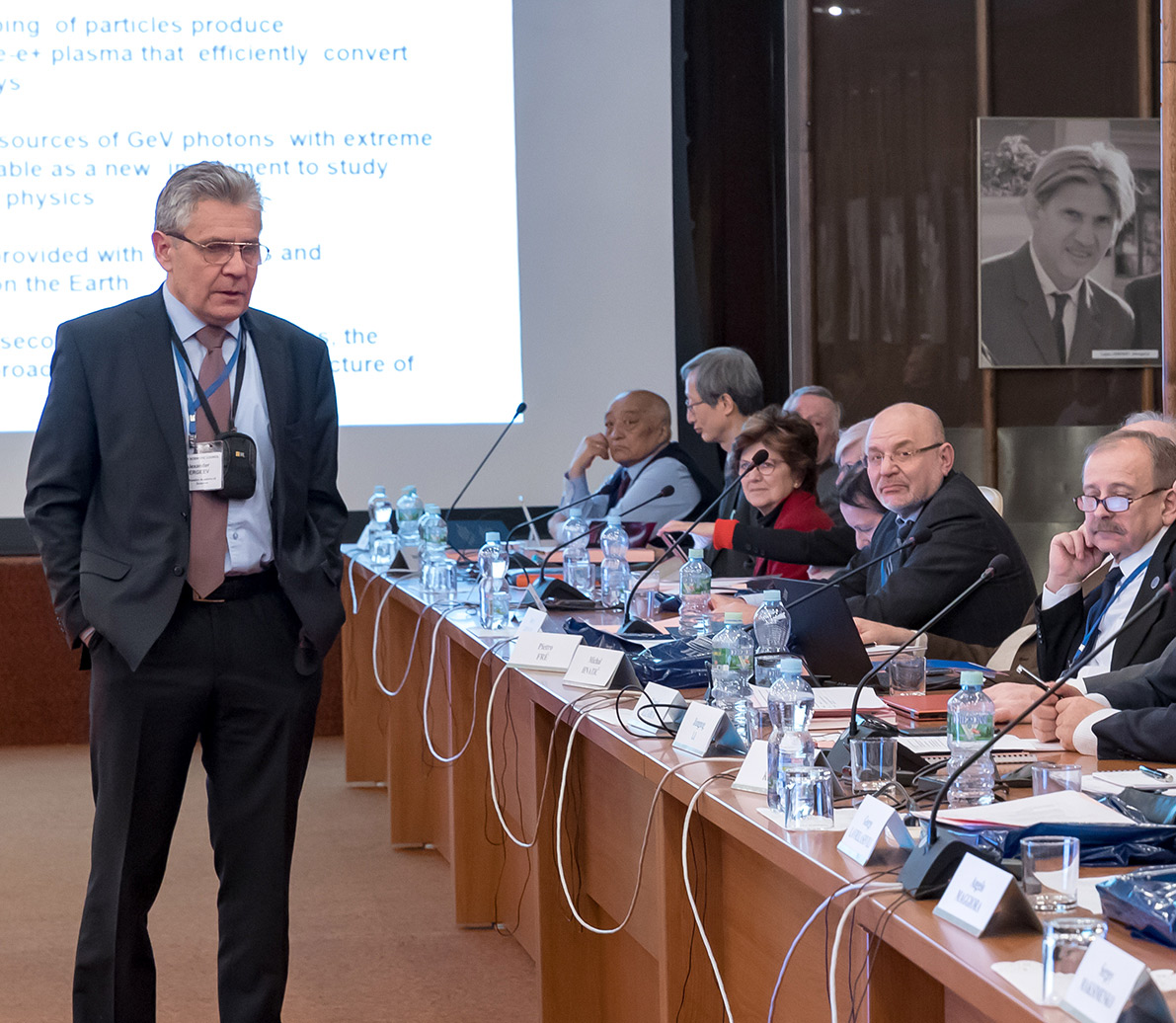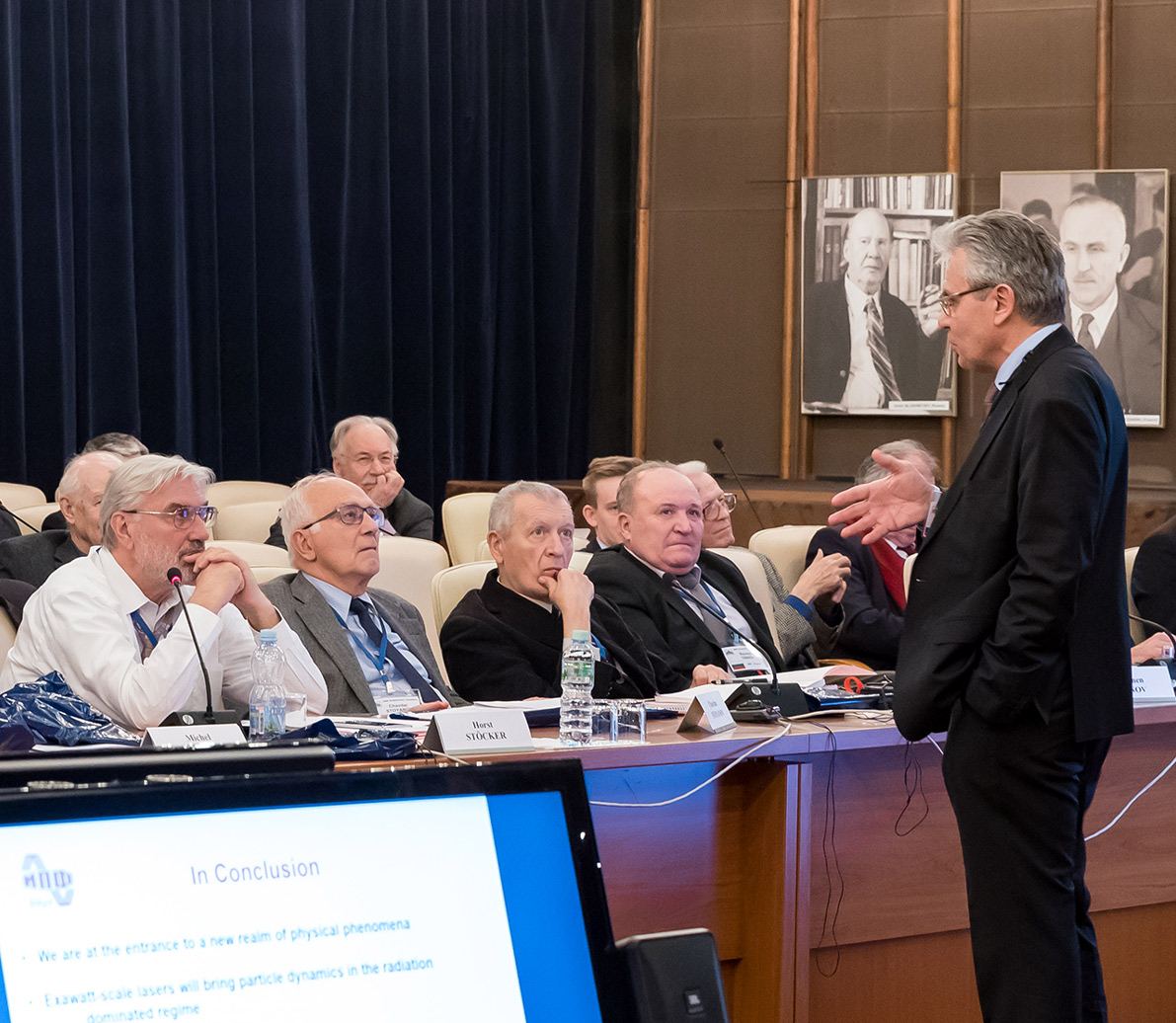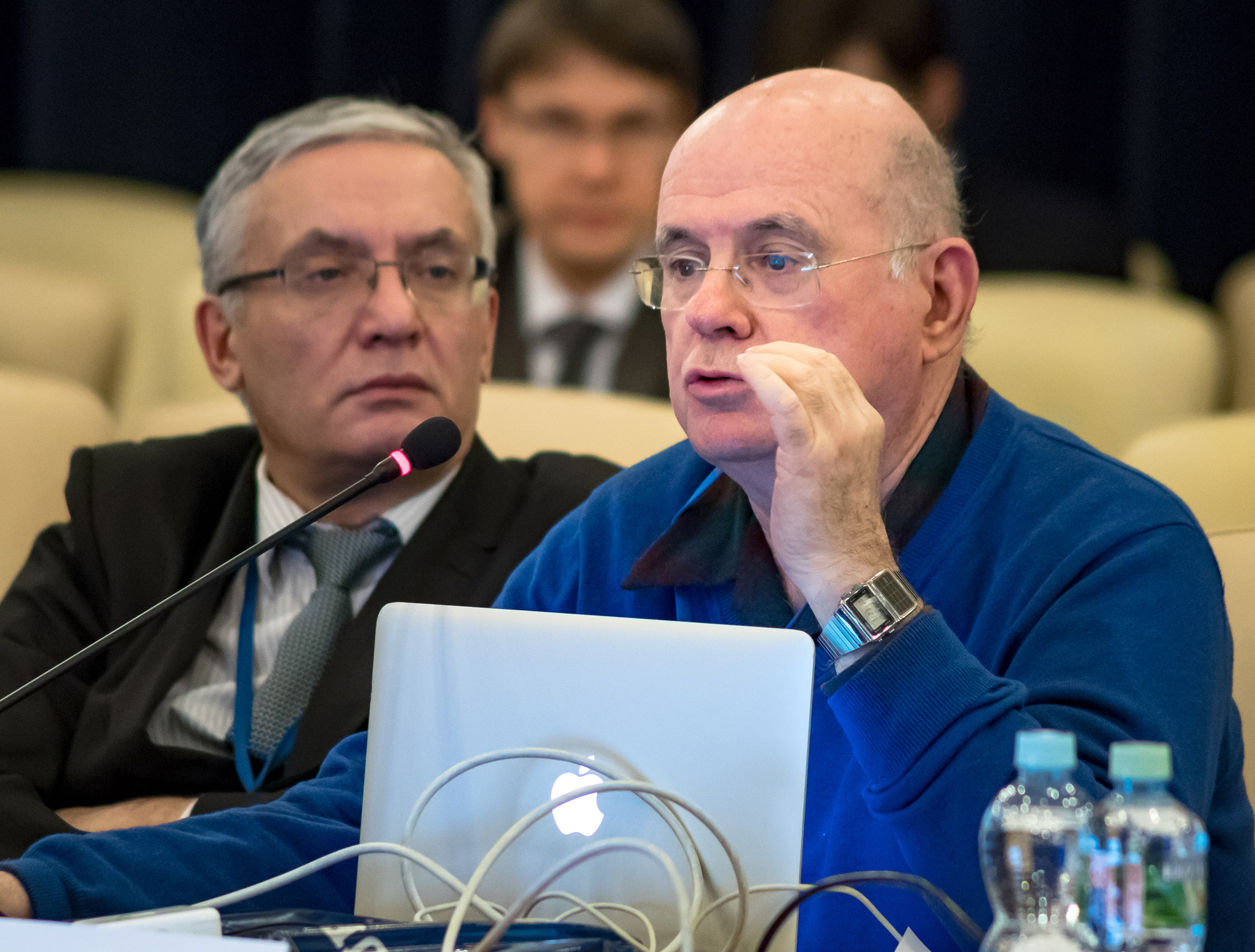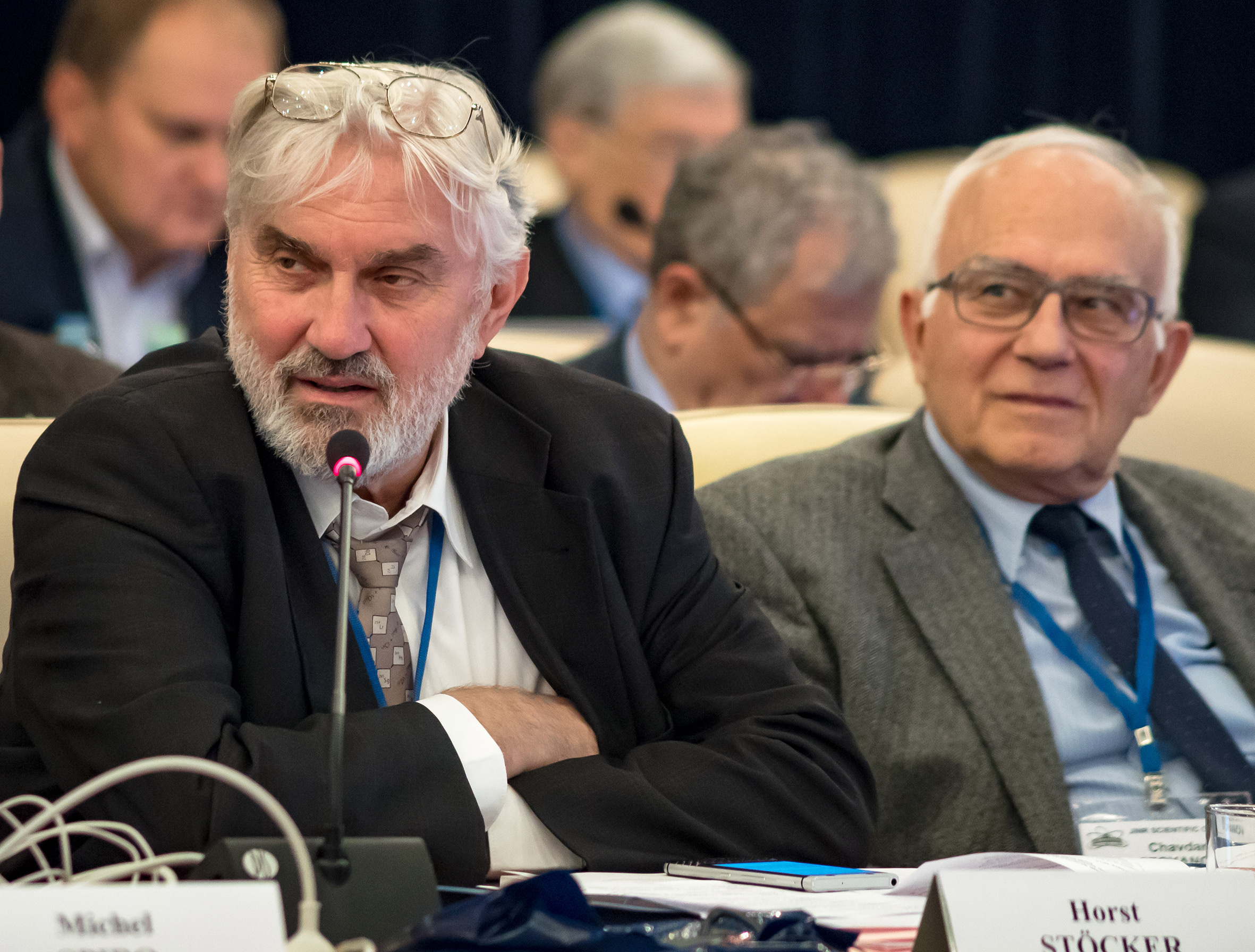At the 125th session of the JINR Scientific Council
Organization, 27 February 2019
“It was a complicated but fruitful period”
JINR Director Academician Victor Matveev started his report on major results of the Institute’s work carried out since the past meeting of the Scientific Council (September 2018) with the milestones of the Session of the Committee of Plenipotentiary Representatives of the Governments of the JINR Member States that took place in Bucharest on 19 – 20 November 2018. As a rule, CPP sessions held in JINR Member States are joined with symposiums dedicated to the development of cooperation with a hosting country. Such meetings allow making a profound and detailed overview of the Institute’s activities. At the symposium in Romania, Directors of the JINR laboratories and leading Romanian scientists presented their reports. Participants of the Session expressed their gratitude to organizers for the perfect organization of the symposium. The Committee of Plenipotentiary Representatives assigned to the JINR Directorate the preparation of the agenda devoted to the upcoming International Year of the Periodic Table of Chemical Elements, especially in the JINR Member States and countries engaged in the Institute’s activities on the basis of agreements on scientific and technical cooperation. The Committee also supported efforts of the Directorate to popularize the Institute’s achievements and carrying out educational activities. Further report by JINR Director reflected the first events held in Paris and Moscow dedicated to the International Year of the Periodic Table and then considered major scientific results and the progress of implementation of the JINR flagship projects and the development of the international scientific cooperation.
Programme of the 125th session of the JINR Scientific Council
Answering the questions of journalists, Victor Matveev said: “Meetings of the Scientific Council are always large-scale events for our Institute: world-leading scientists in the fields of experimental and theoretical physics come to us; it is a meeting of close colleagues who serve to science and international scientific cooperation. Today’s meeting is devoted to general discussion of the milestones of the past six months. It was a complicated but fruitful period, and one of its key results is the completion of the Factory of superheavy elements. This year is highlighted by a great holiday for us as far as UNESCO and the United Nations proclaimed it the International Year of the Periodic Table. We dedicate our work to this event and we wish our new results at the launched Factory of superheavy elements will become the grounds for the Periodic Table of Chemical Elements to be named after Dmitry Ivanovich Mendeleev. It is only fair.
Of course, large-scale work is underway in all other fields; it is very active and brings a lot of new results. According to the questions and comments of our colleagues made at the Scientific Council, they express their considerable interest in the promotion of our research in all areas. Generally speaking, science develops at a fast pace and it is seen in our experience; it cannot be separated from education and innovations. After my report today, I was asked how we see the development what we call innovations in the Institute. And we see it as not one of possible ways of earning money but as our duty: we should pass the results obtained as a product of fundamental research to the society, our Member States. Innovations are the ways of thoughts and the lifestyle. We should try share everything we get in our work with the society: to our families, our city, our country and our Member States. I think that an active participation of our colleagues in discussions of all problems shows that the respect to the Institute is high, the trust shown to us is also considerable, and we must understand that we cannot disappoint these expectations and we should achieve bright results following the outlined way.”
***
Participants of the meeting considered the analysis of the schedules implementation of the JINR flagship projects: NICA, the Factory of superheavy elements, Baikal-GVD. V.D. Kekelidze, S.N. Dmitriev and D.V. Naumov made reports.
Professor Pietro Fré, Italy, shared his impressions with journalists: “Being a member of the Scientific Council, I come here every six months and constantly have a feeling that the time goes very fast as far as every time I come here I learn about new achievements of the Institute in the implementation of outlined plans. I used to visit Dubna often when I was Attaché for Science of the Italian Embassy in Moscow, and now, I returned to my major profession of researcher. However, contacts, as you can see, have not been lost. So, I have an opportunity to compare and make a conclusion that the Institute is on the rise. Our cooperation is successfully developing. Now, there are three members of the Scientific Council from Italy, this number is fairly large, and it indicates a successful cooperation. It grasps all levels of particle physics, nuclear and theoretical physics.”
Professor Krzysztof Rusek (Poland, Warsaw): “In the Heavy Ion Laboratory of the Warsaw University, the cyclotron operates that has been created in Dubna. Now, we negotiate with Dubna colleagues about the production of the similar to the DC-280 accelerator for us and thus we will have an opportunity to conduct research at the cutting edge of nuclear physics. All its parameters satisfy our demands. Our students and young specialists actively participate in training programmes and schools organized in Dubna, come to work in JINR. It is also of great importance for us: until the creation of a new cyclotron, we will have a team for carrying out modern research at it.”
Academician Valery Rubakov (RAS Institute of Nuclear Research, Troitsk): “Due to my scientific specialization, I cooperate a lot with colleagues from the Laboratory of Theoretical Physics that was established by Nikolay Nikolaevich Bogoliubov. They are my old colleagues and friends; it is a strong team. Many events take place in Dubna: regular scientific schools, conferences significant not only for Dubna but for Russia and the world as well. The atmosphere created here when the Laboratory was established is now preserved at a good, modern level. As for the NICA project we have been speaking a lot in recent years, it deals with the understanding of how the quark-gluon environment is arranged under high densities and comparatively low temperatures that will be achieved here in collisions of heavy ions. It is a complicated theoretical issue, and I think that there will be a close intertwining of experimental and theoretical understanding, and this actually happens now.”
***

Director of the Laboratory of Neutron Physics Valery Shvetsov reported on the status of the creation of the Laboratory for Structural Research of Macromolecules and New Materials at the SOLARIS National Synchrotron Radiation Centre of the Jagiellonian University (Kraków, Poland). He commented on the key statements of his report to the “Dubna” weekly newspaper:
– In 2017, at the meeting of the Finance Committee, Norbert Kučerka made the report on this topic for the first time, and it was the first official announcement of the new project. Discussions were held for a long time; maybe the idea had emerged even earlier. Then, I reported on this material at several PAC meetings, at the session of the Scientific Council, and this activity was supported by all members of the Scientific Council. The JINR Directorate went even further when signed the agreement with the SOLARIS laboratory. It is a centre that will be owned by JINR and operate on behalf of the Institute. It will be placed in Krakow at the Polish synchrotron. In my opinion, it will be a good platform for increasing our participation in one of the Member States.
Nowadays, tender procedures are underway, i.e. contractors will be chosen. You have seen in one of the slides of my presentation that there is a green field on the place where the experimental hall will be placed… Financing issues are being considered because finance allocated by JINR to the project is not aimed at the construction. As I have already said in the report, four leading companies expressed their readiness and wish to take part in competition procedures. Each company has a portfolio of objects; in fact, they constructed all 50 existing synchrotron centres. The most tricky moment for us is the 20 KeV superconducting wiggler. There are technical limits for the sizes of the building in which the equipment is supposed to be placed. The 7 Tesla facility cannot be placed there while the 4,5 Tesla machine does not provide parameters we need… However, colleagues from Novosibirsk, who have taken up this task, promised to think over how to achieve the needed energies with 4,5 Tesla. So, in the nearest days, we will go with colleagues to Novosibirsk and will try to solve the problems with their leading specialists.
***
PAC Chairmen I. Tserruya, M. Lewitowicz and D.L. Nagy reported on the recommendations of the Programme Advisory Committees adopted in January 2019. Participants of the session paid special attention to the milestones of the joint meeting of the PAC for Nuclear Physics and the PAC for Particle Physics at which projects and themes carried out in the Institute in the fields of neutrino physics, astrophysics and dark matter were considered.
The Scientific Council approved the appointment of Vladimir Glagolev, Alojz Kovalík and Dmitry Naumov as the Deputy Directors of the Laboratory of Nuclear Problems until the end of service of Vadim Bednyakov as the Director of the Laboratory. O. ChuluunBaatar was approved in the position of the LIT Deputy Director while Vladimir Korenrov is the LIT Director.
The JINR Director informed that the Council announced a vacant position of Director of the Flerov Laboratory of Nuclear Reactions. Elections will be held at the 127th session in February 2020.
The scientific report “Exawatt science” at the session was made by member of the Scientific Council, RAS President Alexander Sergeev. A 12-channel laser complex with a total peak power up to 200 PW, which more than two times exceeds the todays’ world record, is supposed to be a source of extreme light radiation in the XCELS project aimed at creation of so-called exawatt laser in Nizhny Novgorod. Thus, as it is planned, supremacy of the created facility and the scientific and technological leadership of Russia not only at the moment of its creation but for many years ahead will be provided. It will be possible to implement a unique research programme in several scientific fields. Members of the Scientific Council expressed their gratitude to the colleague for his perfect lecture.
On the second day of the session, young scientists O. Petrova, N. Rumyantseva and T. Nagornaya delivered their reports, which had been recommended at the PAC meetings.
JINR Director Victor Matveev and DLNP Director Vadim Bednyakov awarded the Dzhelepov Prize to Chief Researcher of the Laboratory of Nuclear Problems V.I. Komarov. Academician Victor Matveev introduced to participants of the session the jury’s decision on awarding the Pontecorvo Prize. The award was presented to Professor F. Halzen, Professor in the University of Wisconsin (Madison, USA) for the leading role in the construction of the Ice Cube detector and experimental discovery of very high-energy space neutrinos.
The Scientific Council congratulated Eliezer Rabinovici, a member of the JINR Scientific Council, and Professor Herwig Franz Schopper, a Member of the JINR Scientific Council in 1993-2003, who had been awarded by the American Association for the Advancement of Science (AAAS) the Prize for science diplomacy for 2019 together with other famous scientists: Sir Christopher Llewellyn Smith, Zehra Saers and Jordan Khaled Tukan for their considerable contribution in establishment and development of the international scientific centre SESAME (Allan, Jordan).
Plenipotentiary Representative of the Government of Ukraine at JINR Academician Boris Grinev presented to JINR Vice-Director Mikhail Itkis and Chief Researcher of the Laboratory of Nuclear Problems Julian Budagov honorary diplomas of the Presidium of the National Academy of Sciences of Ukraine for their scientific achievements and on the occasion of celebrating the 100th anniversary of the Academy.
Professor Catalin Borcea (Romania) who chaired the 125th Session answered questions of a reporter of the JINR weekly newspaper::

– How did you felt as CPP Chairman?
– It is not a simple question. One should be very attentive in this role; it is necessary to set the orienteers correctly, direct discussions to ensure functioning of the Scientific Council in the explicitly defined framework, in the right format.
– What are the peculiarities of this session?
– As a rule, the agenda of winter meetings of the Scientific Council sums up the milestones of the past year, considers operation of the basic facilities, the implementation of the JINR Topical Plan, the implementation progress in the key projects of the Institute. However, particular items of the agenda vary annually, of course. The major interest lies in it: it is not a scheme of decision making; it is the content of the scheme. Everything new that the scheme has may provoke discussions; sometimes various opinions are expressed and they should be agreed…
– On the first day of the session, major reports by leaders of the Institute’s large-scale projects – NICA, the Factory of superheavy elements, Baikal-GVD – evoked questions and discussions among participants, and you led the debate confidently.
– I have known Dubna for a long time now, and I can firmly say that all problems are open for debates nowadays, i.e. the most advanced information is discussed at the Council’s sessions – achievements, difficulties – and everyone can judge on his own, to correlate this or that project with the budget, work schedules. So, all this information allows members of the Scientific Council to make optimal decisions to the JINR Directorate.
– At the end of the first day of the meeting, RAS President A.M. Sergeev made a scientific report. I think that the topic that he touched upon is connected in some way with the Romanian project you are engaged in.
– Yes, this topic is close to me as far as Romania now takes part in the ELI construction, it is a centre for the development of the super high intensity with the energy up to 200 PW (to make it clear, one petawatt is equal to one quadrillion watt). And I said when I presented the reporter that exawatt science is now only a dream, and RAS President showed what can be done with such powers. Of course, it is very special physics, and great future is in store for it.
The 126th session of the JINR Scientific Council will be held on 19 – 20 September 2019.
Evgeny Molchanov, JINR Weekly Newspaper,
Photos by Elena Puzynina (JINR Scientific Information Department)


